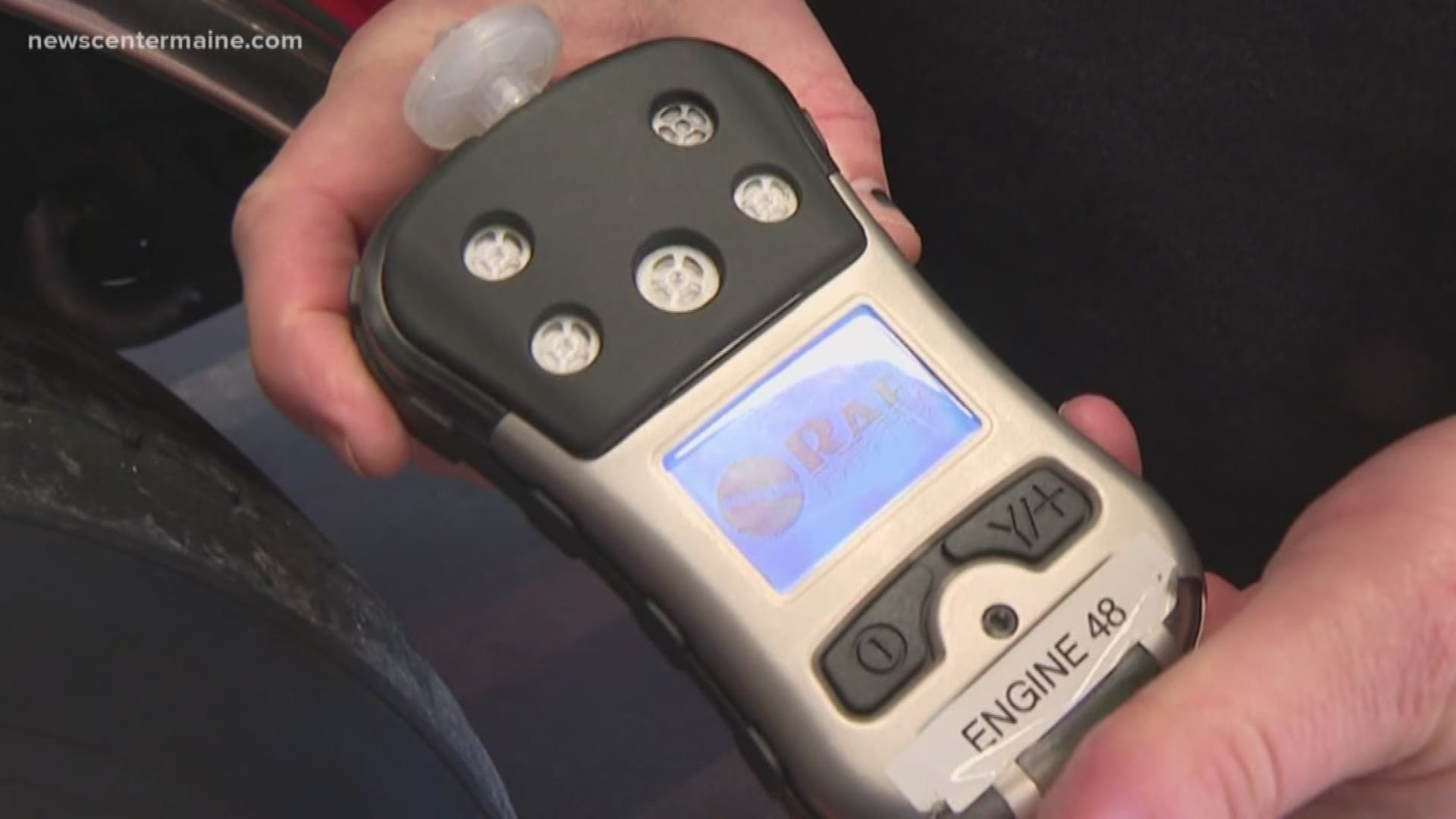AUGUSTA, Maine — The Maine Center for Disease Control and Prevention warned people Tuesday of the dangers of carbon monoxide poisoning as winter approaches.
Since November 1, 2018, thirteen people have been poisoned in Maine by carbon monoxide gas because of improper use of gas-powered generators, faulty heating systems, and working on running engines in a closed garage, the Maine CDC reported.
In Maine, 68 percent of carbon monoxide poisonings happen between November and March.
“Fortunately, these recent cases have not resulted in any deaths but serve as a reminder of how important it is to operate generators safely, check that heating appliances are properly maintained and vented, and to make sure there are working carbon monoxide detectors in the home. Most important, do not operate engines in enclosed spaces,” Maine CDC Director, Dr. Bruce Bates said in a statement.
Anything that burns fuel, such as an oil or propane boiler or wood stove, produces carbon monoxide gas. Carbon monoxide cannot be seen, smelled or tasted. The gas can quickly build up inside a home without anyone noticing.
Gas-powered generators, which people in Maine use frequently during winter power outages, produce significant amounts of carbon monoxide: one generator can produce as much as 100 idling cars.
Properly storing and operating the generator is critical to avoid danger.
“We want people to know how dangerous it is to run gas-powered generators in a basement, cellar bulkhead, garage, on any enclosed space, which may be tempting to do during weather-related power outages,” warned Dr. Bates. “Now, before we have any severe weather, is a great time to make a plan to safely use a gas-powered generator during power outages.”
Anyone with a portable generator should have an extension cord long enough that the generator can run outside, at least 15 feet from windows or doors. Be prepared to keep the generator protected from rain, ice, and snow.
Though it may also be tempting during the cold months to work on engines in garages while the motor is running, this can also be very dangerous. About one-in-five carbon monoxide poisonings each year occur in garages, sheds, or barns while people conduct engine repair or maintenance. Even with windows or doors left open, carbon monoxide can build up inside to dangerous levels.
TIPS FROM THE MAINE CDC:
While the best way to prevent carbon monoxide poisoning is to not let carbon monoxide gas build up in your home, having carbon monoxide detectors with a battery back-up near every sleeping area can save lives and is especially important when heating your home. As of 2016, an estimated seven out of every 10 households in Maine had a carbon monoxide detector, nearly double that of 2004. Regularly check that all detectors have fresh batteries and are functioning properly. If the alarm on your detector goes off, assume it is because of carbon monoxide and not a dead battery and leave the house immediately. Call the fire department or 911 and do not go back into your home until the fire department tells you it is safe.
Facts about Carbon Monoxide Poisoning
- Warning signs of carbon monoxide poisoning are flu-like symptoms, such as headache, nausea, vomiting, dizziness, drowsiness, and confusion, but no fever.
- Carbon monoxide poisoning can cause loss of consciousness and death.
- People who are sleeping or intoxicated can die from carbon monoxide poisoning before ever experiencing symptoms. All people are susceptible to carbon monoxide poisoning.
- Annually, there are approximately 100 emergency department visits for carbon monoxide poisoning and between one and three deaths.
How to Prevent Carbon Monoxide Poisoning During Winter Months
- Service your heating system, water heater, and any other gas, oil, or coal burning appliances every year. Make sure appliance and heating exhaust vents are not blocked by snow after storms.
- Place generators outdoors in the fresh air. Keep it at least 15 feet from windows or doors. Do not put a generator in a closed or partly closed space, like a basement, cellar bulkhead, or attached garage. It’s a good idea to check now, before the power goes out, to make sure your extension cord is long enough. Carbon monoxide can build up to dangerous levels in these spaces.
Make a plan for how to keep your generator dry and protected from ice and snow so you are not tempted to bring it inside a garage or other enclosed structure. Generators also pose a risk of shock and electrocution, especially in wet conditions. Dry your hands before touching a generator.
Place a carbon monoxide detector that is battery powered (or has battery back-up power) outside each sleeping area. By law, all rental units must have a carbon monoxide detector—talk to your landlord if you don’t have one in your apartment or rental house. Carbon monoxide detectors are in most stores. Look for the UL mark with the "Single Station Carbon Monoxide Alarm" statement.
Do not use outdoor cooking devices, such as grills or camp stoves, indoors. Do not leave vehicles or any other gas-powered motors running inside a garage or other enclosed space. Don't try to heat your home with a gas oven.
Leave the house at once.
Call the fire department or 911.
Get medical attention. Call the Poison Center (1-800-222-1222) or your doctor after you leave the house.
Do not go back into the building until the fire department tells you it is safe.

